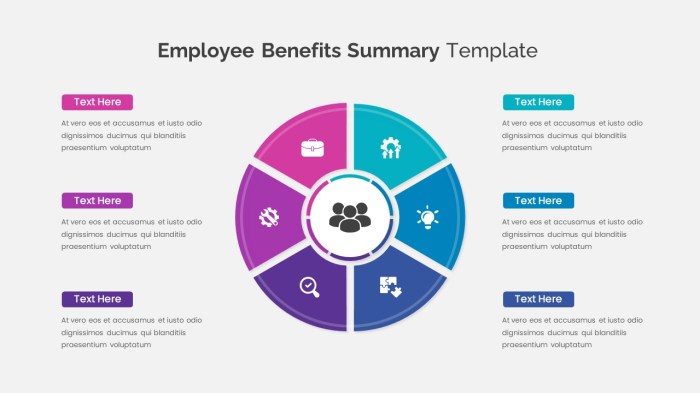How to change habits? This isn’t just about willpower; it’s about understanding the psychology behind our routines. This guide dives deep into the science of habit formation, helping you pinpoint, modify, and maintain positive changes. From identifying triggers to building new routines, we’ll explore proven strategies and provide practical tools for lasting success.
We’ll examine the stages of habit development, exploring the crucial role of reinforcement and motivation. Understanding how habits are formed, whether healthy or unhealthy, is key to effectively changing them. We’ll also look at different methodologies, like SMART goals and habit stacking, and compare their effectiveness. Furthermore, we’ll address common obstacles and provide strategies to overcome setbacks, empowering you to stay committed to your goals.
Understanding Habit Formation
Habits are ingrained behaviors that become automatic over time, shaping our daily routines and influencing our overall well-being. Understanding the psychological processes behind habit formation is crucial for both developing positive habits and overcoming negative ones. This knowledge empowers us to take conscious control over our actions and achieve lasting change.Habit formation is a complex interplay of psychological and neurological processes.
It involves the brain’s reward system, learning, and memory. The repeated pairing of a cue, an action, and a reward leads to the formation of a neural pathway. This pathway strengthens with each repetition, making the behavior automatic and requiring less conscious effort.
Psychological Processes in Habit Formation
The brain’s reward system plays a central role in habit formation. When a behavior is followed by a pleasurable experience or a reduction in discomfort, the brain releases dopamine, a neurotransmitter associated with reward and motivation. This positive reinforcement strengthens the neural pathways associated with the behavior, making it more likely to be repeated. Classical conditioning also plays a significant part, where a neutral stimulus (the cue) becomes associated with a rewarding experience (the reward), triggering the same response over time.
Stages of Habit Development
Habits typically progress through distinct stages. The first stage involves the cue, which signals the brain to perform a specific action. The action itself is the second stage, which is the behavior itself. Finally, the reward reinforces the habit loop. This loop of cue, action, and reward repeats, eventually leading to automatic behavior.
Role of Reinforcement and Motivation
Reinforcement, whether positive or negative, significantly influences habit formation. Positive reinforcement, such as receiving praise for exercising, strengthens the habit of exercising. Negative reinforcement, such as avoiding a headache by drinking water regularly, also motivates the behavior. Motivation, intrinsic or extrinsic, is another crucial element. Intrinsic motivation comes from within, such as the enjoyment of a hobby, while extrinsic motivation arises from external factors, such as earning a reward.
A combination of both often leads to the most successful habit formation.
Examples of Habit Formation
Many habits are formed through this process. For example, brushing teeth, eating breakfast, and going for a walk in the morning become habits through repeated actions reinforced by their benefits. Similarly, unhealthy habits like overeating, procrastination, and smoking also develop through repeated actions and reinforcement, whether it’s a temporary feeling of satisfaction or a way to cope with stress.
The key difference lies in the nature of the reward.
Comparison of Healthy and Unhealthy Habit Formation
| Characteristic | Healthy Habit Formation | Unhealthy Habit Formation |
|---|---|---|
| Cue | A positive trigger, like the time of day or a specific task. | Stress, boredom, or an unpleasant emotional state. |
| Action | Engaging in a beneficial activity, like exercise or studying. | Engaging in detrimental behaviors, like excessive screen time or overeating. |
| Reward | Physical and mental well-being, improved performance, or personal satisfaction. | Short-term gratification, relief from stress, or avoidance of unpleasant feelings. |
| Reinforcement | Positive reinforcement through satisfaction and improvement. | Negative reinforcement through avoidance or temporary relief. |
| Motivation | Intrinsic motivation and long-term goals. | Extrinsic motivation and short-term gratification. |
Identifying Existing Habits

Unveiling the hidden patterns in our daily routines is crucial for effective habit modification. Understanding what habits currently shape our behavior provides a clear starting point for identifying areas needing change and creating a roadmap for improvement. This process involves more than just awareness; it necessitates a structured approach to tracking and analyzing our actions.
Changing habits is tough, but surprisingly, the principles are similar to raising a child. You need consistency and a well-defined plan. For example, if you want to develop good study habits, you need to establish a routine and reward yourself for meeting your goals. This is precisely why understanding how to raise a boy right is so important – you need to tailor your approach to each individual and support their growth.
Ultimately, the key to successful habit change is a blend of encouragement and strategic action.
Strategies for Pinpointing Habits
Identifying habits that require modification necessitates a proactive approach. A key strategy involves introspection and self-reflection. Consider journaling your daily activities, noting what you do habitually and the context surrounding those actions. Look for recurring patterns in your behavior. Are you reaching for a sugary snack after work every day?
Do you find yourself scrolling through social media before bed consistently? Identifying these repetitive behaviors is the first step toward understanding their triggers and potential solutions. Another approach is to use a habit-tracking app, which can provide data visualization and identify patterns more objectively.
Methods for Tracking Habits
Effective habit tracking involves detailed documentation of frequency, duration, and triggers. This meticulous record-keeping provides invaluable insights into the nature and extent of the habits you want to modify. Tracking frequency involves noting how often a specific behavior occurs in a given timeframe. For instance, how many times do you check your phone during a work meeting?
Duration focuses on the length of time spent on a particular activity. How long does it take you to complete a particular task, and what are the circumstances around that task? Triggers are the events or situations that precede a habit. For example, is checking social media triggered by receiving a notification or a feeling of boredom?
Understanding triggers allows for the development of targeted strategies to break the cycle.
Habit Tracking Template
A structured template for logging and analyzing habit patterns facilitates a systematic approach to understanding your routines. A template should include columns for the date, time, habit description, frequency, duration, trigger, and a space for notes on your emotional state, physical environment, and other relevant factors.
Habit Tracking Methods
| Method | Description | Pros | Cons |
|---|---|---|---|
| Journaling | Handwritten or digital logs detailing habits, triggers, and contextual factors. | Highly customizable, promotes introspection, cost-effective. | Can be time-consuming, data entry may be inconsistent. |
| Habit Tracking Apps | Mobile applications designed for habit tracking, often with features for reminders, progress visualization, and goal setting. | Organized data, visual insights, automated reminders, goal setting. | Requires a mobile device, potential data privacy concerns. |
| Digital Calendars | Scheduling and reminders for specific tasks and activities. | Easy reminders, efficient for task-oriented habits. | May not capture contextual details, can feel rigid if not customized. |
Tracking habits in a structured manner is essential for understanding the nuances of your behavior. Using a combination of methods can provide a more comprehensive and accurate picture of your routines. By consistently recording these details, you gain a powerful tool for identifying the patterns that govern your actions and setting the stage for change.
Strategies for Change: How To Change Habits
Embarking on a journey to alter habits requires a strategic approach. Simply acknowledging a habit’s existence isn’t enough; transforming it necessitates a well-defined plan. This section delves into effective techniques for dismantling undesirable routines and cultivating new, positive ones. Different methodologies offer varying perspectives, and understanding their nuances is crucial for tailoring a strategy that resonates with your personal needs.Successful habit change is a process, not an event.
It demands conscious effort, consistent application, and a willingness to adapt. A comprehensive strategy must incorporate elements of self-awareness, goal setting, and the proactive replacement of negative patterns with positive ones. This necessitates a deeper understanding of the “why” behind your habits, enabling you to implement targeted solutions.
Techniques for Altering Existing Habits
Understanding the root causes of your habits is essential to effectively alter them. Consider identifying triggers, rewards, and the emotional connections associated with the habit. Once recognized, strategies for modification can be developed. Techniques include gradual reduction, substitution, and environmental modification. Gradual reduction involves slowly decreasing the frequency or intensity of the habit over time.
Substitution involves replacing the undesirable habit with a comparable, but more beneficial alternative. Environmental modification entails adjusting your surroundings to minimize triggers and maximize opportunities for the desired behavior.
Strategies for Establishing New, Positive Habits
Building new habits is fundamentally similar to changing existing ones. A robust approach involves clarity of intention, establishing clear goals, and implementing consistent reinforcement. Focus on one habit at a time to avoid feeling overwhelmed. Breaking down complex goals into smaller, achievable steps enhances the likelihood of success. For example, instead of aiming to exercise daily, you could begin with 10 minutes of walking three times a week.
Comparing Habit Change Methodologies
Various methodologies can aid in habit change. SMART goals (Specific, Measurable, Achievable, Relevant, Time-bound) provide a structured framework for defining objectives. Habit stacking involves linking a new habit to an existing one, leveraging the momentum of an established routine to reinforce the desired change. The concept of habit loops, which consist of cue, routine, and reward, provides insights into the mechanics of habit formation.
Understanding these mechanisms allows for strategic intervention points.
Table of Habit Change Approaches
| Methodology | Pros | Cons |
|---|---|---|
| SMART Goals | Provides structure and clarity, facilitates measurement of progress, fosters accountability. | Can feel rigid, might not accommodate unforeseen circumstances, potential for demotivation if goals are too ambitious. |
| Habit Stacking | Leverages existing routines, makes habit integration easier, promotes consistency. | May not be suitable for all habits, requires careful planning to ensure compatibility with existing routines. |
Replacing an Undesirable Habit with a Desirable One, How to change habits
Consider replacing the habit of excessive screen time with dedicated time for reading. A cue, such as finishing dinner, triggers the routine of putting away your phone and picking up a book. The reward is the intellectual stimulation and relaxation associated with reading. To make this substitution effective, track your progress, adjust your approach as needed, and reward yourself for achieving milestones.
Regular reflection on the process is key to fine-tuning the strategy for long-term success.
Overcoming Challenges

Embarking on a habit change journey is often fraught with unexpected obstacles. Motivation waxes and wanes, setbacks feel inevitable, and the path forward can seem daunting. This section delves into common challenges encountered during habit modification, providing practical solutions to navigate these hurdles effectively.Successfully changing a habit requires not just understanding the process, but also developing resilience to handle the inevitable bumps along the way.
This is where proactive strategies, self-compassion, and support systems become crucial. Recognizing and addressing challenges head-on empowers individuals to maintain their momentum and ultimately achieve their desired outcomes.
Common Obstacles to Habit Change
Understanding the common obstacles encountered during habit change is the first step towards overcoming them. These obstacles can stem from internal factors like lack of motivation, emotional triggers, or a lack of self-compassion. External factors, such as scheduling conflicts or social pressures, can also play a significant role.
- Lack of Motivation: Motivation fluctuations are a normal part of the habit change process. It’s essential to acknowledge these dips and not to view them as failures. Employing strategies to reignite motivation, such as setting clear goals, celebrating milestones, and focusing on the positive impact of the new habit, can significantly improve outcomes.
- Setbacks and Relapses: Relapses are not failures, but rather opportunities for learning and adjustment. View setbacks as part of the learning curve and adapt strategies accordingly. A key aspect is identifying triggers and developing coping mechanisms to navigate these situations.
- Emotional Triggers: Certain situations or emotions can trigger unwanted behaviors. Identifying these triggers and developing strategies to manage them proactively is essential. Journaling or mindfulness practices can help in identifying patterns and developing healthier responses.
- Lack of Self-Compassion: Being overly critical during the process can hinder progress. Practicing self-compassion, treating yourself with kindness and understanding, is crucial for sustaining motivation and maintaining a positive outlook.
- External Factors: External pressures, such as time constraints or social situations, can disrupt the habit change process. Building flexibility into the plan, and prioritizing the habit, is crucial to navigating these situations effectively.
Strategies for Dealing with Setbacks
Addressing setbacks is a critical part of habit change. These strategies provide actionable approaches to overcome challenges and maintain momentum.
Changing habits is tough, but think about it like this: if the world were populated by only 100 people, the world there were only 100 people would drastically alter our perspective. Suddenly, every single action would have a ripple effect, and maintaining consistency would become paramount. This same principle applies to our own lives. Focusing on smaller, achievable changes makes the journey less daunting and more sustainable.
- Acceptance and Reframing: Accepting setbacks as part of the process is essential. Avoid self-criticism. Instead, reframe the setback as an opportunity for learning and adjusting the approach.
- Adapting Strategies: Recognize that the initial strategy might not always be optimal. Adapting the plan to better suit individual needs and circumstances is vital for long-term success.
- Identifying Triggers: Recognizing specific situations or emotions that trigger unwanted behaviors is crucial for developing proactive strategies to manage them. Tracking triggers through journaling or a dedicated log can reveal patterns and help develop coping mechanisms.
- Seeking Support: Connecting with supportive individuals, whether friends, family, or a therapist, can provide encouragement and accountability. Support systems are vital in navigating challenges and maintaining motivation.
Maintaining Motivation
Sustaining motivation throughout the habit change process is key to long-term success. Maintaining motivation requires consistent effort and a strategic approach.
- Celebrate Small Wins: Acknowledging and celebrating small achievements reinforces positive behavior and maintains momentum. Regularly rewarding progress is crucial for staying motivated.
- Focus on Long-Term Goals: Connecting the new habit to broader long-term objectives helps maintain motivation. Keeping the “why” behind the habit change in mind can help maintain focus when motivation wanes.
- Visualize Success: Visualizing the positive outcomes of the new habit can increase motivation. Mentally rehearsing the desired behavior and the associated benefits can reinforce the commitment.
Importance of Realistic Expectations
Setting realistic expectations is crucial for avoiding disappointment and maintaining motivation. Gradual change is often more sustainable than drastic alterations.
- Gradual Change: Trying to overhaul habits overnight often leads to frustration and failure. Focusing on incremental changes increases the likelihood of success.
- Flexibility and Adjustment: Being prepared to adjust the plan based on individual needs and circumstances is essential for long-term success. A flexible approach accommodates setbacks and unexpected challenges.
Self-Compassion and Support Systems
Self-compassion and support systems are indispensable for navigating the challenges of habit change. Building a strong support network can provide encouragement and accountability.
- Kindness and Understanding: Practicing self-compassion involves treating oneself with kindness and understanding during setbacks. This approach fosters resilience and promotes long-term success.
- Seeking Support from Others: Connecting with supportive individuals, whether friends, family, or a therapist, can provide encouragement, accountability, and shared experience.
Maintaining New Habits
Building new habits is a journey, not a sprint. While establishing the new behavior is crucial, maintaining it long-term requires a different set of strategies. This phase focuses on solidifying the habit, preventing setbacks, and ensuring lasting consistency. Understanding the factors that contribute to habit maintenance is key to achieving long-term success.
Solidifying New Habits
Establishing a new habit involves more than just the initial implementation. The process of solidifying it requires reinforcement and conscious effort to integrate it seamlessly into daily life. This involves identifying triggers and cues that signal the need for the habit, and then building associations between these triggers and the desired behavior. By linking the new habit to existing routines and positive associations, the likelihood of its consistent performance increases.
Strategies for Preventing Relapses
Relapses are a natural part of the habit-building process. Instead of viewing them as failures, they should be recognized as opportunities for learning and adaptation. Developing a plan for addressing potential setbacks is crucial. This could include identifying common triggers for relapse, developing alternative responses to those triggers, and having a support system to help navigate these moments.
Celebrating Milestones and Rewarding Progress
Celebrating milestones and rewarding progress is a powerful motivator. Recognizing achievements, no matter how small, reinforces positive behavior and fosters a sense of accomplishment. This creates a positive feedback loop, encouraging continued adherence to the new habit. Small rewards, such as a short break, a favorite snack, or a non-material reward, can be highly effective in maintaining motivation.
The Role of Environment and Social Support
Environment plays a critical role in habit maintenance. Creating an environment conducive to the new habit can significantly increase the likelihood of success. This includes removing temptations or obstacles that could hinder the habit, and surrounding oneself with positive influences. Social support from friends, family, or a support group can provide encouragement, accountability, and motivation. A strong support system can offer valuable feedback, understanding, and help navigate challenges.
Sustainable Habit Strategies
| Strategy | Description | Example |
|---|---|---|
| Habit Stacking | Linking the new habit to an existing one. | Brushing teeth -> drinking a glass of water |
| Habit Tracking | Monitoring progress through journaling or apps. | Using a habit tracker app to log daily exercise. |
| Accountability Partner | Sharing goals with a friend or family member. | Telling a friend you’re trying to exercise more. |
| Environment Modification | Adjusting the physical space to support the habit. | Removing sugary snacks from the kitchen if you are trying to eat healthier. |
| Positive Reinforcement | Rewarding yourself for adherence to the habit. | Watching a favorite show after completing a workout. |
Habit Change Examples
Transforming ingrained habits is a journey, not a sprint. It requires understanding the complexities of habit formation and applying tailored strategies. This section will delve into real-world examples of successful habit changes, highlighting the strategies used, the challenges encountered, and the inspiring stories behind them.Successful habit change isn’t about willpower alone; it’s about creating sustainable systems that support new behaviors.
We’ll explore how individuals have overcome obstacles and maintained their new routines, demonstrating the power of proactive change.
Exercise Habit Change
Consistent exercise is often a challenging habit to establish, but with the right approach, it’s achievable. One example involves an individual who struggled with infrequent workouts. They recognized that their current routine lacked structure and accountability. To address this, they created a weekly workout schedule, incorporating specific times and types of exercise. They also joined a fitness class, which provided social support and motivation.
This structured approach, combined with finding an activity they genuinely enjoyed, proved crucial. Challenges included time constraints and feelings of inadequacy, which were overcome by prioritizing workouts as non-negotiable appointments in their calendar and by focusing on personal progress rather than comparing themselves to others.
Healthy Eating Habit Change
Shifting to a healthier diet can be daunting, but the rewards are well worth the effort. A person who previously consumed processed foods frequently realized the negative impact on their energy levels and overall well-being. They started by gradually reducing their intake of sugary drinks and replacing them with water. They also made a conscious effort to incorporate more fruits and vegetables into their meals.
Crucially, they sought support from a registered dietitian who provided personalized guidance and meal planning tips. Challenges included cravings and social situations where unhealthy food options were readily available. These were addressed by stocking healthy snacks at home, preparing meals in advance, and having a support system to encourage healthy choices. The individual found that focusing on gradual changes, rather than drastic ones, made the transition more sustainable.
Time Management Habit Change
Effective time management is crucial for productivity and well-being. A professional who frequently felt overwhelmed by deadlines and tasks realized the need for better organization. They implemented a daily planner, assigning specific time slots for different tasks and prioritizing them based on urgency and importance. They also learned to say no to non-essential commitments, freeing up time for focused work.
This systematic approach to task management, along with the development of strong organizational skills, led to improved productivity and reduced stress. Challenges involved interruptions and unexpected events, which were tackled by using time-blocking techniques to minimize distractions and developing a flexible approach to unexpected circumstances.
Habit Change Case Studies
| Habit Change | Strategies Used | Challenges Encountered | Outcomes |
|---|---|---|---|
| Exercise | Structured schedule, fitness class, enjoyable activity | Time constraints, feelings of inadequacy | Increased physical activity, improved health and well-being |
| Healthy Eating | Gradual reduction of processed foods, increased fruits/vegetables, dietitian support | Cravings, social situations | Improved dietary habits, increased energy levels, better overall health |
| Time Management | Daily planner, prioritizing tasks, saying no to non-essential commitments | Interruptions, unexpected events | Increased productivity, reduced stress, improved organization |
Habit Change Tools and Resources
Embarking on a habit change journey can feel daunting. Fortunately, numerous tools and resources are available to support you every step of the way. These tools provide structure, motivation, and accountability, making the process more manageable and effective. Understanding the diverse range of options available can empower you to choose the best fit for your personal needs and preferences.Effective habit change strategies often involve a multifaceted approach.
Simply identifying a habit you want to change isn’t enough; you need the right tools to make that change stick. This section explores various tools and resources that can significantly assist in your habit transformation, from simple journaling to sophisticated apps and support groups.
Habit Tracking Apps
Habit tracking apps are a popular choice for managing and monitoring behavioral changes. They offer a structured way to record your progress, visualize your habits, and identify patterns. These apps typically allow you to set goals, track daily activities, and receive personalized feedback. Their visual representations can be highly motivating and can help you see your progress clearly.Examples of popular habit tracking apps include Habitica, Streaks, and Habi.
Habitica, for instance, gamifies habit formation, transforming tasks into quests and rewards. Streaks provides a straightforward approach to tracking habits, focusing on daily consistency. Habi offers more comprehensive features for customizing habit tracking.
Mindfulness and Self-Reflection
Mindfulness and self-reflection are crucial elements in habit change. Mindfulness practices, such as meditation, help you become more aware of your thoughts, feelings, and behaviors. This heightened awareness allows you to identify triggers and patterns associated with your habits. Self-reflection helps you understand the underlying reasons behind your habits, enabling you to address them more effectively.Incorporating mindfulness into your routine can help you respond to urges and impulses with greater awareness and control.
Self-reflection provides valuable insights into your motivations, allowing you to tailor your strategies for lasting change. This process goes beyond simply tracking habits; it focuses on understanding the deeper motivations behind them.
Support Groups and Communities
Support groups and online communities dedicated to habit change can offer invaluable assistance. Sharing experiences, providing encouragement, and receiving feedback from others facing similar challenges can significantly boost motivation and accountability. These communities can offer personalized advice and solutions to specific obstacles you might encounter. Connecting with like-minded individuals facing similar challenges can foster a sense of belonging and provide encouragement during setbacks.Support groups can range from in-person meetings to online forums.
These communities can be invaluable resources, providing a safe space for sharing experiences, learning from others, and finding support during challenging times.
Changing habits isn’t always easy, but understanding the underlying reasons is key. Sometimes, the very words we use to describe our struggles can hinder progress. For example, “lazy” can become a self-fulfilling prophecy, preventing us from even trying to break free from ingrained patterns. This word makes it impossible to stop being lazy, and it’s important to reframe those thoughts.
Instead of labeling yourself, focus on actionable steps to modify your behavior. Finding the root cause of the habit and replacing it with a more productive one is the real key to success in changing habits. this word makes it impossible to stop being lazy will help you think more critically about this idea. So, how do you really get started?
Evaluating Habit Change Resources
Finding reliable resources for habit change is essential. Carefully evaluate the resources you consider using. Look for evidence-based strategies, clear instructions, and positive user reviews. Look for resources that align with your personal values and learning style. Consider the reputation and credibility of the resource provider.To evaluate resources, consider factors such as the author’s expertise, the scientific basis of the methods described, and user testimonials.
Look for resources that offer a comprehensive approach to habit change, encompassing not only the practical steps but also the psychological underpinnings. Understanding the rationale behind the strategies is key to long-term success.
Table of Habit Change Resources
| Category | Resource | Description |
|---|---|---|
| Apps | Habitica | Gamified habit tracker |
| Apps | Streaks | Simple habit tracking |
| Apps | Habi | Comprehensive habit tracking |
| Books | Atomic Habits by James Clear | Practical strategies for habit change |
| Websites | Psychology Today | Articles and resources on habit change |
| Support Groups | Online forums dedicated to habit change | Community support and encouragement |
Specific Habit Modification
Transforming ingrained habits into desired behaviors requires a deep understanding of the underlying causes and tailored strategies. This section delves into specific habits like procrastination, overeating, and insufficient sleep, exploring the root causes and providing actionable steps for modification. Understanding the nuances of these behaviors empowers individuals to create sustainable change.Procrastination, overeating, and lack of sleep are often more complex than they seem.
They’re not simply bad choices but often stem from deeper issues, like fear of failure, emotional distress, or poor time management skills. Addressing these underlying causes is key to creating lasting change.
Procrastination Modification Strategies
Procrastination often stems from a fear of failure, perfectionism, or overwhelming tasks. Breaking down large projects into smaller, manageable steps can significantly reduce the feeling of being overwhelmed. Prioritizing tasks based on importance and urgency, using time management techniques like the Pomodoro Technique, and creating a dedicated workspace can also be highly effective.
- Identify the root cause: Is procrastination stemming from fear, perfectionism, or a lack of clear goals? Understanding the underlying cause is crucial for effective strategies.
- Break down tasks: Divide large projects into smaller, more manageable tasks. This reduces the perceived difficulty and increases the likelihood of starting.
- Prioritize tasks: Use methods like the Eisenhower Matrix (urgent/important) to prioritize tasks based on their importance and urgency. Focus on the most critical tasks first.
- Time management techniques: Employ techniques like the Pomodoro Technique (25-minute work intervals with short breaks) to improve focus and maintain momentum.
- Create a dedicated workspace: Designate a specific area for work, free from distractions, to improve focus and productivity.
Overeating Modification Strategies
Overeating often stems from emotional eating, stress, or a lack of awareness about hunger cues. Understanding emotional triggers and developing healthy coping mechanisms are essential for lasting change. Regular exercise, mindful eating, and keeping a food journal can help individuals become more aware of their eating habits.
- Identify emotional triggers: Are you reaching for food to cope with stress, boredom, or sadness? Recognizing these triggers is the first step to managing them.
- Mindful eating: Pay attention to your hunger and fullness cues. Eat slowly and savor each bite. This helps you understand when you’re truly satisfied.
- Healthy coping mechanisms: Develop healthy strategies to deal with stress, boredom, or other emotions that may lead to overeating. Consider exercise, hobbies, or spending time with loved ones.
- Regular exercise: Physical activity can help regulate appetite and improve mood, potentially reducing cravings.
- Food journaling: Tracking your food intake, including portions and emotions, can help you identify patterns and make conscious choices.
Lack of Sleep Modification Strategies
Lack of sleep often stems from stress, poor sleep hygiene, or underlying medical conditions. Establishing a consistent sleep schedule, creating a relaxing bedtime routine, and optimizing your sleep environment are key elements in improving sleep quality.
- Consistent sleep schedule: Go to bed and wake up around the same time each day, even on weekends, to regulate your body’s natural sleep-wake cycle.
- Relaxing bedtime routine: Establish a calming bedtime routine to signal to your body that it’s time to sleep. This could include taking a warm bath, reading, or listening to calming music.
- Optimize sleep environment: Ensure your bedroom is dark, quiet, and cool to promote a conducive sleep environment.
- Limit screen time before bed: The blue light emitted from electronic devices can interfere with sleep. Avoid screens at least an hour before bedtime.
- Seek medical advice: If sleep problems persist, consult a doctor to rule out any underlying medical conditions.
Comparison of Strategies
| Habit | Root Cause | Strategies |
|---|---|---|
| Procrastination | Fear, perfectionism, overwhelm | Task breakdown, prioritization, time management techniques |
| Overeating | Emotional eating, stress, lack of awareness | Mindful eating, healthy coping mechanisms, regular exercise |
| Lack of Sleep | Stress, poor sleep hygiene, medical conditions | Consistent schedule, relaxing routine, optimized environment |
Procrastination Guide: Actionable Steps
This guide Artikels actionable steps to overcome procrastination:
- Identify triggers: Recognize situations or tasks that lead to procrastination.
- Break down tasks: Divide large projects into smaller, manageable steps.
- Set realistic deadlines: Establish achievable deadlines for each task.
- Create a schedule: Allocate specific time slots for tasks.
- Reward yourself: Acknowledge and reward progress to maintain motivation.
- Seek support: Share your goals and progress with a friend or mentor.
Summary
Ultimately, changing habits is a journey, not a destination. This guide provides a comprehensive framework to understand, identify, and modify your habits. Remember that consistency, self-compassion, and a supportive environment are essential for long-term success. By applying the strategies and tools Artikeld here, you can cultivate positive changes and achieve your goals. Embrace the process, celebrate your progress, and enjoy the transformation!











